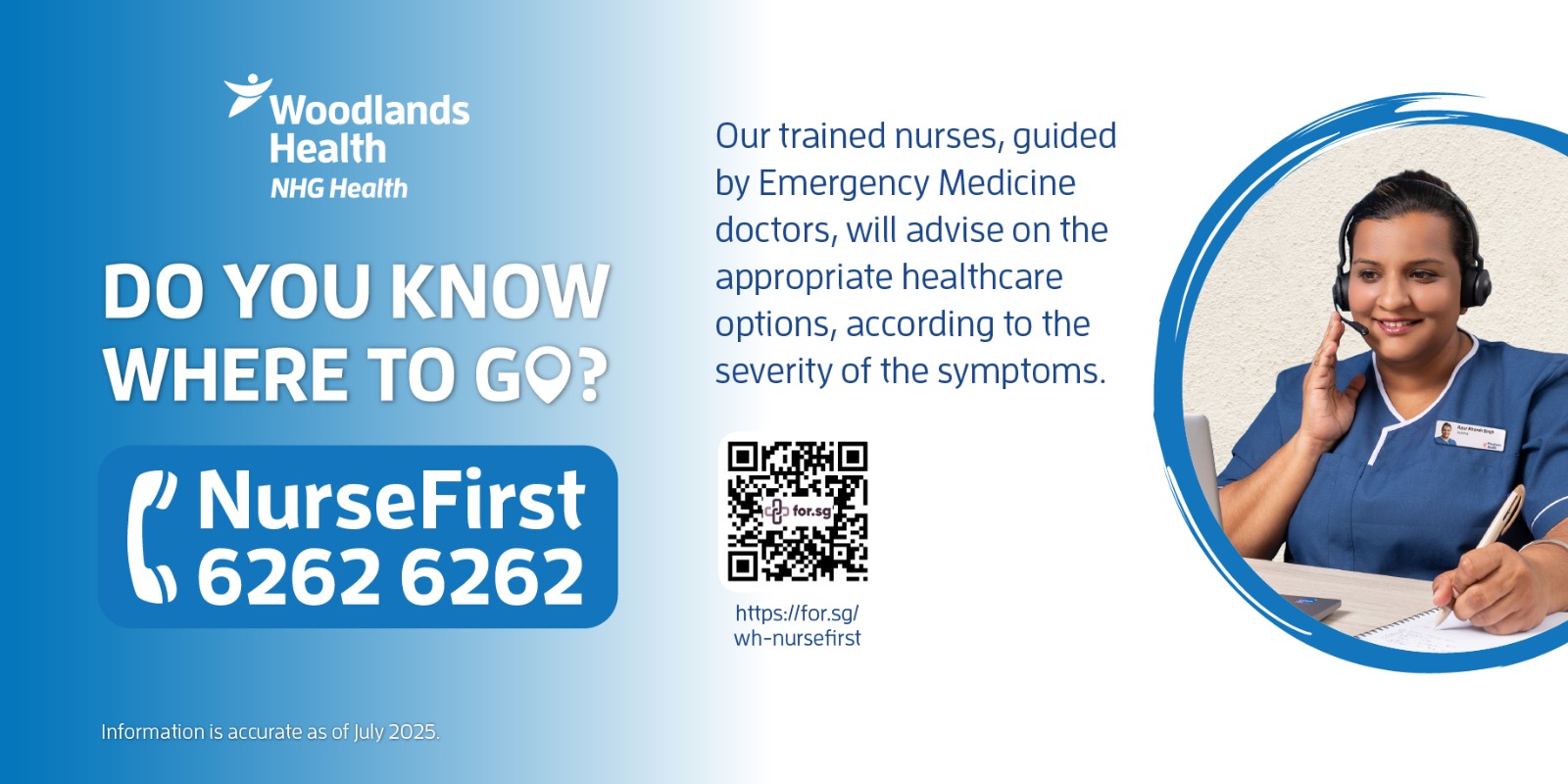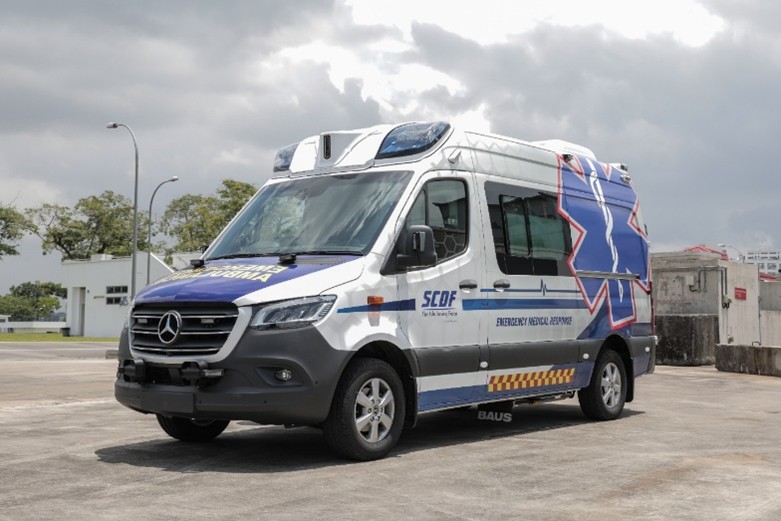Transforming Pre-Hospital Emergency Care
13 October 2025
Co-authored by MOHT-UPEC, with inputs from SCDF
Every second counts in an emergency, but what happens when the emergency departments in our hospitals are overwhelmed?
With rising demand in emergency medical services, there is a need to rethink how care is accessed, and whether alternative forms of help can be provided to patients who may not need to be treated at the Emergency Department (ED). Singapore’s Pre-Hospital and Emergency Care (PEC) system, is being redesigned so that patients can receive timely and appropriate care while preserving emergency resources for patients who need them most.
The NurseFirst initiative
NurseFirst is a medical triage helpline (6262 6262) staffed by emergency-trained nurses who guide callers to appropriate alternative care sites other than the Emergency Department (ED).

With this new triaging hotline, patients and callers are encouraged to call 6262 6262 instead of 995 for non-life threatening medical conditions. When a call does come through the 995 hotline, and assessed to be non-life-threatening, it will be transferred to the helpline. Depending on their symptoms and acuity of their medical condition, callers will be guided towards the following appropriate treatment options:
Visit a General Practitioner (GP) or Public Health Preparedness Clinics (PHPC);
Visit an Urgent Care Centre (UCC);
Manage their condition at home;
Activate non-emergency medical transport;
Seek teleconsultation;
If the patient’s condition worsens during the call, an emergency ambulance will be dispatched.
Nationwide trial
This new care path was trialed nationally in June 2025, helmed by Singapore Civil Defence Force (SCDF) and Woodlands Health (WH), with support from Ministry of Home Affairs (MHA) and Ministry of Health (MOH). Non-life-threatening 995 calls are routed to NurseFirst, which allow callers to receive timely medical advice while keeping emergency ambulances available for life-threatening emergencies.
This triage model helps to reduce unnecessary ambulance dispatches and ED visits, while ensuring all patients’ calls are promptly attended to with practical next steps.
Patient safety comes first
With patients’ safety as a key priority, NurseFirst ensures that :
Nurses use a series of evidence-based questions to detect serious conditions.
Emergency physicians (EP) provide clinical oversight. Where necessary, the EPs are contacted via internal communication devices to give expert input, guiding and validating nurses’ decisions.
Integrated systems are easily accessible by the personnel involved, to ensure continuity of care, with information on patient care and interventions easily available across their one access platforms.
The collaboration between SCDF and NurseFirst has garnered public interest, with valuable feedback: Early responses showed that while members of the public are getting more familiar with the idea of being transferred to NurseFirst, many still prefer direct ambulance dispatch or ED referral. Understanding and addressing these preferences will be key to shaping a service that meets public needs and building public trust over time.

Where patients can go instead of the ED
For NurseFirst to work, patients need accessible alternatives to the ED. MOH Office for Healthcare Transformation (MOHT) is working with regional health systems to expand options, such as:
GP clinics and PHPCs with extended hours;
Virtual teleconsultation platforms;
Mobile medical teams and home visits;
Urgent Care Facilities and hospitals’ urgent care clinics.
These services bring care closer to home and reduce unnecessary ED visits.
A future-ready care system
This PEC transformation builds on lessons from other MOHT initiatives that have redefined how and where care can be delivered.
MIC@Home, for instance, offers clinically suitable patients the option to receive hospital-level care in the comfort of their own homes through a mix of teleconsultations, remote monitoring, and home visits by a multidisciplinary care team. By doing so, it has shown that hospital-level outcomes can be achieved beyond hospital walls, improving patient experience while freeing up scarce acute care capacity.
Similarly, the Community Hospital of the Future (CHoF) project explores new care models within community hospitals to better meet patients’ rehabilitation and sub-acute needs. It reimagines how such institutions can play a stronger role in the broader healthcare ecosystem, one that is integrated, tech-enabled, and responsive to changing population needs.
Together, these initiatives reflect a common theme: care that is right-sited, digitally supported, and anchored in multidisciplinary collaboration. They demonstrate that healthcare can be both patient-centred and system-efficient.
NurseFirst builds on these insights by applying the same principles to the urgent and pre-hospital care space. By combining teletriage, nurse-led assessments, and close integration with community and emergency services, it ensures that patients get timely, appropriate help, diverting non-urgent cases away from emergency departments.
With NurseFirst and similar innovations, patients gain more choice and confidence in navigating care, while the healthcare system remains agile, sustainable, and centred on public needs.
Find out more about the NurseFirst initiative:
CNA/Youtube: Calling 995? You may be rerouted to the NurseFirst helpline instead | Deep Dive podcast - YouTube
